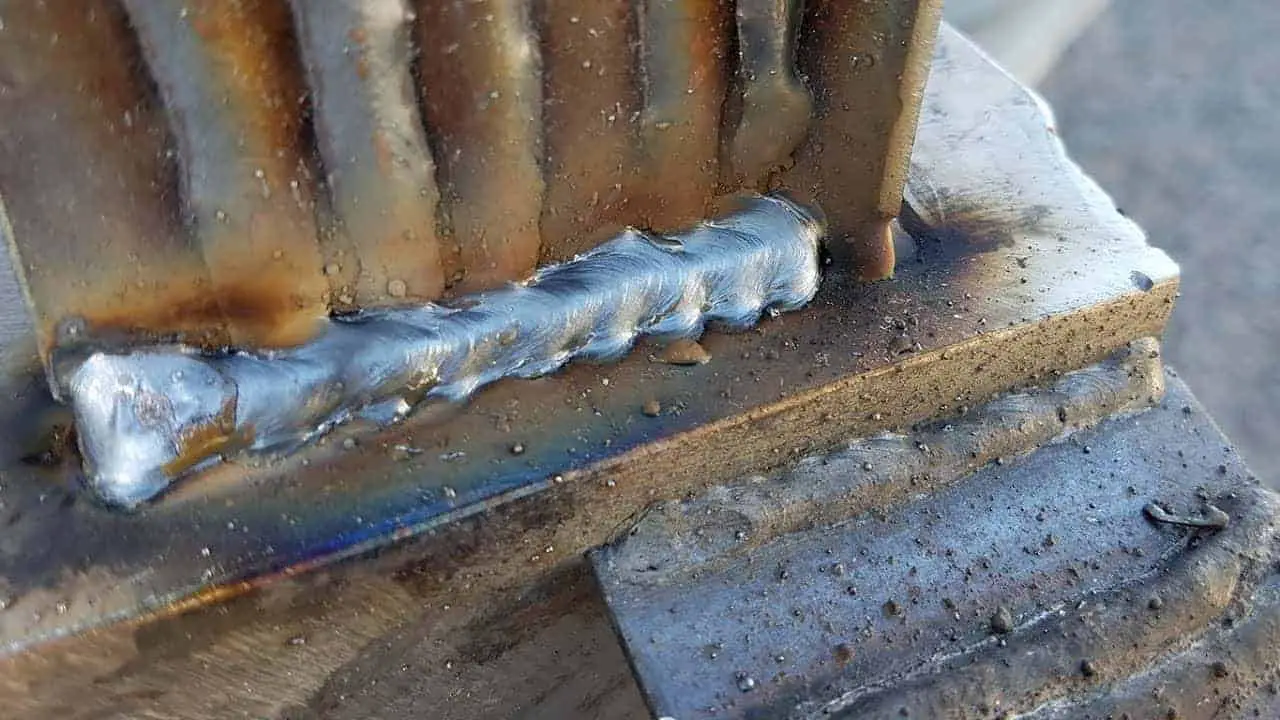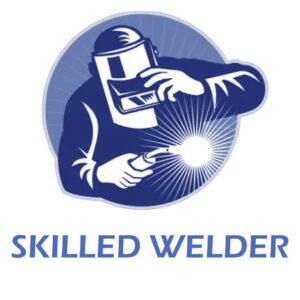Flux-cored, are wires that have been in use for a long time in the welding industry, they are available in two types, the self-shielded (FCAW-S) and the gas shielded (FCAW-G). The two types of wires are made of flux on the inside and an outer sheath; during welding, the alloys and deoxidizers incorporated in the flux, protect the weld from contaminants.
Despite there being over 25 different types of welding wires, there are only four types that are used most of the time and these are the Stick, TIG, The Flux-Cored arc welding, and the MIG. However, the excerpt below will dig on the differences of the Flux Cored vs the Mig Strength.
Flux Cored

Flux-cored wires are therefore used in welding, and the FCAW-G requires an external source of gas that will help protect the molten weld, whereas the self-shielded are self-reliant. Flux-cored wires are thus used for maintenance purposes, in-shop fabrication and shipbuilding. And the best application for the electrodes is on surfaces that are either experiencing rust or have surface contaminants.
The flux-cored wires are also used to create a hard surface on new parts, which will, in the long run, prevent impact. So to use the flux core wire electrode, you must use a wire feed unit with narrow rollers that will grip and pull the wire electrode without damaging or making it flat. Flux core metal when heat adds filler metal to the relevant surface.
The two types of flux-cored wires have to be used with regard to their scientific creation process, for example, flux-cored the self-shielded contains a protective flux such that during the welding process a protective cloud is created that prevents nitrogen and oxygen from combining and reacting with the arch metal. They are also rarely affected by breezes that affect the gas shielded processes.
The latter are highly reliant on secondary shielding gas to protect the molten weld, high-pressure cylinders are also used in the process. And an example of gas used in this process is pure CO2 and though the pressure in the gas cylinder is always too high, a regulator attached to the gas cylinder is used to help regulate the gas during use.
Enthusiasts prefer to use pure CO2 because it offers good penetration; however, users should not expect to achieve a stable arc. The latter should, however, not be considered a barrier because when Argon and CO2 are mixed then less penetration is realized and a stable arch is achieved. There is also the slag system which is the solidified flux that remains behind after cooling of the weld area.
Slag systems have been classified into two categories which are the rutile also written as T-1 and the basic categories written as T-5. The reason as to why you should keep a keen eye on the slag system is because the T-1 turns out to be easy to weld, produces good arch quality and has an effective weld puddle control.
Characteristics of the flux-cored
Flux-cored is available in different diameters and comes as a wire stick out or electrode extension. The size of the gas shield and the self-shielded flux do not necessarily determine the type of weld or if you are going to achieve greater deposition. Novice users are thus bound to be deceived by a large diameter flux-cored wire, when a small diameter wire could actually provide the results they are looking for.
All in all, however, if you want to get the perfect results then it is advisable to follow the manufacturer’s instructions especially during application. When using the small diameter flux-cored wires a user could be able to achieve greater deposition but this is also dependant on the amperage, which will, in turn, determine the stick out length.
The composition of your flux cored wire has also much to do with the type of weld in which case we have the single and multiple pass welding. The former is achieved by depositing the filler material with a single pass, and the latter flux-cored is used when more than one joint can be weld while the plate thickness incorporates the same material and procedure.
Flux-cored wires pros
- Can weld thick materials
- Has a high deposition rate
- Have strong impact values and high strength welds
- Can be used easily by the less professional
Flux-cored wires cons
- Come at a steep price
- Wire brushing might be necessary after welding
Mig Strength
Like any other skill, welding skills and techniques are honed by continuous practice that will help achieve a clean and perfect finish. However, deciding on the type of welder to use can be quite a challenge, thanks to the influx of affordable high-quality machines. In comparison to flux-cored we will therefore, dig deeper into Mig strength and provide you with a comprehensive excerpt.
Mig (Metal Inert Gas welding) offers good quality end results complete with excellent penetrative abilities, the reason why it has been adopted for use in industries. And for the welding job to be conclusive, a shielding gas comprising of carbon dioxide and argon is adopted for use, to prevent the molten weld pool from being contaminated by atmospheric air.
How to work the Mig welding
The Mig welding gun is a very simple machine to use, even for the first-timers. The machine comprises of a welding gun, and you will have to find a source of power and a wire drive mechanism that will help pull the wire electrode from a spool and direct it right through the welding gun. Also, don’t forget to get a shielding gas supply.
When purchasing the Mig machine the choice is entirely the buyers, because they come with different operational designs. For example, there is the semiautomatic welding machine, the automatic and the manual manipulation machine. New users might not be aware of this, so in case it is your first time to use the Mig ensure that your gun has a sliding electrical contact.
The latter will be used for transmission of the welding current to the electrode, and the shielding gas that is necessary for use in the arc and the molten weld pool must also be provided for, with a route for the gas and a nozzle that will help direct the gas.
So how do we get our Mig powered up? Well, just find an electrical switch, which will perform three functions, the first one is that it will help in the electrode feed, operate the shielding gas flow and the most important is that it will be used to start the welding current and stop it when not in use.
Now when it comes to Mig applications there are two processes, the first one is the reverse polarity and the other one is the straight polarity. The former has been deemed the best because it produces a stable arc, facilitates smoothening during metal transfer, spatter loss is low and the end results have good weld bead characteristics.
Straight polarity, which also uses direct current does feature a high electrode melting rate but mostly results in an unstable arc and the reason why it is rarely used.
Properties of Mig
When it comes to Mig welding the electrode is also the source of heat, so during welding, the wire and the arc will heat the surrounding base metal, melting will then occur, which will result in a welded joint. Professionals in the welding industry will attest to the fact that whenever you use Mig, it doesn’t take a lot of time to cool.
This happens because of the fact that the base metal absorbs heat from the Mig Joint. Now, let’s get into a little science on the tensile strength of the MIG. The process of curing metal has only two processes, which are cooling and heating, cured metal is always strong but the problem usually arises in the cooling process.
The use of heat on metal, therefore, is meant to make it stronger and harder, thus the tensile strength. The latter is what everyone desires but remember any metal with high tensile strength is bound to be less malleable. To this end, it is apparent that the process and speed at which the MIG weld joint cools renders it brittle.
Mig Strength pros
- Using the welder does not involve a steep learning curve
- Mig welder is speedy to operate thus saves time
- Mig welder doesn’t leave a lot of mess behind
- Mig Welding offers versatility as it can be used by a variety of alloys and metals
Mig strength cons
- Mig is sensitive to contaminants
- Mig welding cannot be conducted in a windy area as you risk blowing the shielding gas away
Mig might not be perfect at welding because of competitors like TIG, and Flux Cored, but it does hold up in some of the most significant areas, like its ability to work on steel of varied thickness such as the stainless steel, nickel, and aluminum.

